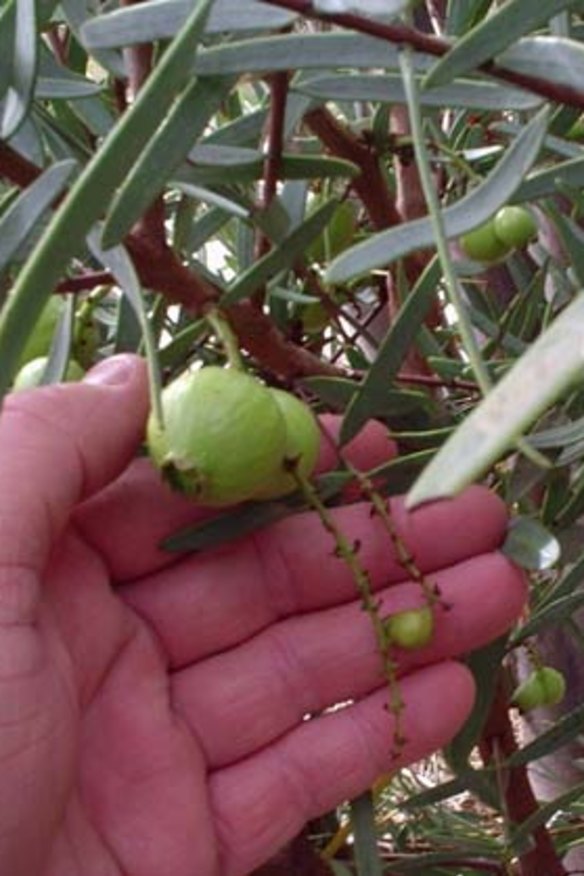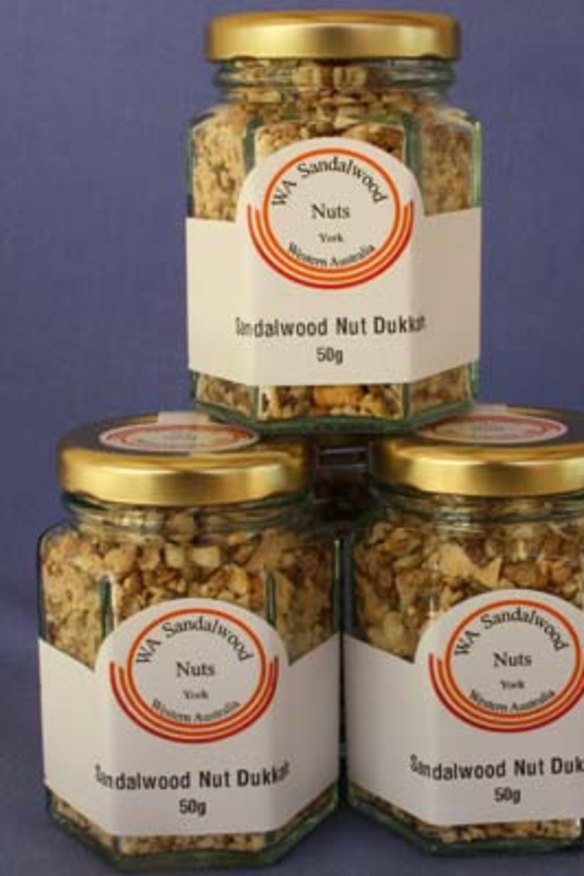Secrets of sandalwood - furniture and good eating too

When you think of sandalwood, it's unlikely that food is the first thing that springs to mind. But this tree, most commonly known for its use in furniture or as a fragrance for perfume and incense, actually produces an edible nut, which an enterprising couple from Western Australia is now farming.
Connie and Marty Winch-Buist have been selling the nuts whole or as dukkah for around a year under their label WA Sandalwood Nuts.
"They have a really unique flavour,” says Connie. “Some people say they taste like almond, or more like hazelnut. Raw they're a bit dull but roasted they're lovely."

Lucas Martin from The Agrestic Grocer in Orange stocks the nuts and says the flavour is something you have to taste to understand.
“It has the aroma of sandalwood, so you get the fragrance as you eat it. It's more subtle than a macadamia, but the texture is different from most nuts,” he says.
Originally mine workers from Geraldton, Connie and Marty made a career change in 2005, buying a 40-hectare farm in York, Western Australia.
"When we bought the property we looked at other products like olives but they need a lot of water. Sandalwood grew here naturally in the past, so it doesn't need much water and it's not as easily affected by pests."
They planted their first Australian sandalwood trees five years ago and now have 10 hectares of it on their property.
Australia's native sandalwood tree is usually farmed for its wood and roots, from which the fragrant oil is derived. However it takes 25 years or more for this slow growing tree to reach maturity. Connie and Marty already knew sandalwood nuts were edible because the local Aboriginal people use them for food, so they decided to give harvesting nuts a go. Connie says harvesting the nuts rather than wood enables them to get a return every year.
Chef Xavier Poupel and his wife Janette Judge-Poupel use sandalwood nuts in a number of dishes for their mobile catering business, Terroir and Table.
“We use it in pastry, in fish, and also with vegies,” says Xavier. “It's very versatile. We use the nuts in our brownies instead of macadamias, and people seem to like it.”
Lucas, who sells the nuts as a retail product, says sandalwood nuts are not yet on The Agrestic Grocer's cafe menu because they are still learning about how to use it in cooking.
“We're still trying to understand it. We're thinking of using it in South East Asian style broths and dishes, where the sandalwood nut can replace nuts that are traditionally used. That's something we're graduating towards.”
Xavier says he has had good results with it in dishes.
“Australia is ready for change; with so many different cuisines, people are always willing to try new things. Chefs always have to try new produce too; you either love it or you don't and since I've had good results I've been using it more and more.”
Xavier's suggestions on how to use sandalwood nuts:
- You get the best flavour when you roast them lightly. When you crush the nuts, do it by hand because a blender will make it too fine.
- For fish, Xavier suggests making a crumble mixing herbs, a bit of buckwheat and crushed sandalwood nuts combined with some olive oil to coat the fish in.
- Crumbled, roasted sandalwood nuts are also the perfect accompaniment to roasted asparagus; just sprinkle the crushed nuts over the roasted asparagus, and toss with some olive oil.
Restaurant reviews, news and the hottest openings served to your inbox.
Sign up